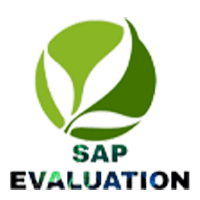Introduction to Substance Abuse Programs
Welcome to our blog, where we delve into the world of SAP programs and shed light on the importance of DOT regulations. Substance abuse is a severe issue affecting individuals, families, and communities. Thankfully, organizations like the Department of Transportation (DOT) have implemented guidelines to ensure safety in the transportation industry.
This blog will explore what a DOT SAP Program entails and its pivotal role in maintaining safety standards within various sectors. From understanding its purpose and benefits to learning what is required to participate– we’ve got you covered! So, let’s dive right in and unravel the mysteries behind these essential programs. Stay tuned!

Understanding the Department of Transportation (DOT) Regulations
The Department of Transportation (DOT) has established regulations to ensure the safety and well-being of employees performing safety-sensitive functions in aviation, trucking, railroads, pipelines, and maritime industries. These regulations include guidelines for substance abuse testing and prevention programs.
DOT regulations require employers to implement a Substance Abuse Program that includes pre-employment drug testing, random drug testing, reasonable suspicion drug testing, post-accident drug testing, and follow-up drug testing. We design these programs to identify individuals who might be under the influence of drugs or alcohol while performing safety-sensitive duties
Employers in these industries need to understand and comply with DOT regulations to ensure the safety of their employees and those they serve. Non-compliance can result in fines and penalties for both individuals and organizations.
By implementing a DOT SAP Program, employers meet regulatory requirements and create a safer work environment. These programs help prevent accidents caused by impaired employees while promoting employee health and productivity.
Employers must establish written policies outlining their Substance Abuse Programs to comply with DOT regulations. They must also educate employees on substance abuse awareness in their training programs. Additionally, they should maintain records related to drug tests conducted within their organization.
Understanding DOT regulations is crucial for businesses operating in transportation-related industries. By following these guidelines diligently, companies can ensure compliance with regulatory requirements while prioritizing employee welfare.
The Purpose and Benefits of DOT SAP Programs
DOT SAP programs are crucial in promoting safety within the transportation industry. These programs are designed to identify and address substance abuse issues among employees with safety-sensitive positions, such as commercial drivers.
The primary purpose of these programs is to ensure that individuals in safety-sensitive roles are fit for duty and free from the harmful effects of drugs or alcohol. By implementing strict regulations and testing procedures, the DOT aims to prevent accidents caused by impaired driving.
There are several benefits associated with DOT substance abuse programs. They help maintain a safe working environment for both employees and the public. By identifying individuals with substance abuse problems early on, companies can take appropriate measures to mitigate risks and protect everyone involved.
These programs promote employee well-being by providing support and resources for those struggling with addiction. Through education, counseling services, and rehabilitation options, individuals can receive the help they need to overcome their dependence on drugs or alcohol.
Moreover, participating in a DOT substance abuse program can have long-term advantages for employees. Completing a program demonstrates an individual’s commitment to sobriety and responsibility toward their job duties. This achievement may open doors for career advancement opportunities within the transportation industry.
DOT substance abuse programs are essential in ensuring workplace safety while assisting those facing addiction challenges. By addressing these issues head-on through comprehensive testing procedures and supportive resources, we can create safer roads and healthier communities.
Who is Required to Participate in DOT SAP Programs?
DOT substance abuse programs are not limited to particular individuals or organizations. The Department of Transportation (DOT) regulations require certain groups of people, known as “safety-sensitive employees,” to participate in these programs.
Safety-sensitive employees include those who operate commercial motor vehicles (CMVs), such as truck drivers, bus drivers, and pilots. Railroad engineers and crew members, pipeline operators, and workers involved in aviation maintenance and repair must also participate.
It’s important to note that these regulations apply regardless of whether the employee holds a commercial driver’s license (CDL) or performs safety-sensitive functions voluntarily. If an individual falls under the definition of a safety-sensitive employee within the DOT guidelines, they must comply with the requirements of a DOT substance abuse program.
These programs aim to ensure public safety by minimizing drug and alcohol-related incidents in transportation industries. By imposing mandatory participation for safety-sensitive employees across various sectors, including aviation, maritime transportation, railroads, pipelines, and motor carriers, it helps maintain a standard level of safety throughout the industry.
Failure to comply with these regulations can result in severe consequences for employees and employers. All individuals under this category must understand their obligations regarding participating in DOT substance abuse programs.
Components of a DOT SAP Program
A DOT SAP Program consists of various components that work together to ensure the safety and well-being of employees in safety-sensitive positions. These programs are designed to prevent and detect substance abuse among employees who perform safety-sensitive functions, such as operating commercial motor vehicles.
One important component of a DOT SAP Program is pre-employment testing. Before being hired for a safety-sensitive position, applicants must undergo drug and alcohol testing to ensure they are free from substance abuse. This helps employers make informed decisions about prospective employees’ fitness for duty.
Another crucial component is random testing. Employers must randomly select employees throughout the year for unannounced drug and alcohol tests. This is a deterrent and helps identify individuals with substance abuse problems who may pose risks in safety-sensitive roles.
Post-accident testing is also an essential part of these programs. All drivers must undergo drug and alcohol testing within specified time frames if an accident involves an injury requiring medical treatment or vehicle towing. This ensures accountability after accidents occur.
Reasonable suspicion testing allows employers to require drug or alcohol tests if there is reasonable cause to believe an employee may be under the influence while on duty. Supervisors trained to recognize impairment signs can initiate this testing based on observable behavior or other evidence.
- When an employee who has violated the DOT regulations completes the steps outlined by their employer’s SAP following a positive test result or violation, they conduct a return-to-duty testing. This confirms that the individual no longer poses a threat due to substance abuse issues before resuming their duties.
- Follow-up testing is often included in these programs for individuals who have completed return-to-duty requirements. Individuals will typically face regular follow-up tests over several months or years as determined by their SAP, ensuring ongoing monitoring and support during recovery.
DOT SAP Programs also include education and training to raise awareness about substance abuse and its impact on safety.
How to Sign Up for a DOT Drug Abuse Program
Enrolling in a DOT substance abuse program is essential for individuals subject to Department of Transportation regulations. The following are the things you need to do:
- Understand the requirements: Before enrolling, ensure you understand the specific requirements outlined by the DOT. These may vary depending on your industry and job responsibilities.
- Find an approved provider: Look for a substance abuse program recognized and approved by the DOT. This ensures that you will receive proper treatment and meet regulatory standards.
- Schedule an assessment: Contact the chosen provider to schedule an assessment appointment. You will be evaluated during this process to determine if further treatment or education is necessary.
- Complete required treatments or classes: If the assessment recommends, follow through with any needed treatments or courses as part of your substance abuse program.
- Provide documentation: Keep copies of all documentation related to your enrollment in a DOT substance abuse program, including assessments, treatment plans, and completion certificates.
- Maintain compliance: It’s crucial to stay compliant with all aspects of your substance abuse program throughout its duration. This includes attending scheduled appointments and completing necessary follow-ups or random testing as mandated by the DOT.
By following these steps, individuals can successfully enroll in a DOT substance abuse program and work towards maintaining their eligibility under Department of Transportation regulations without repetitive information.
Frequently Asked Questions about DOT SAP Evaluation Programs
What is a DOT SAP program?
The Department of Transportation designs a specific set of regulations and procedures, known as a DOT substance abuse program, to address the issue of substance abuse in regulated industries. These programs aim to ensure that employees who perform safety-sensitive functions are accessible from drug and alcohol misuse, promoting workplace safety.
Who needs to participate in these programs?
Employees who fall under the jurisdiction of the DOT must participate in these programs. This includes individuals in transportation sectors such as trucking, aviation, railroads, maritime vessels, and public transit.
What are some components of a DOT substance abuse program?
Components typically include drug and alcohol testing, an employee assistance program (EAP), supervisor training on signs of substance abuse, education materials for employees about drug-free workplaces, and return-to-duty processes after violations occur.
How can someone enroll in a DOT SAP Evaluation program?
The process may vary depending on the individual’s role and employer. Generally speaking, enrolling involves completing necessary paperwork or online forms provided by employers or designated third-party administrators. Once registered, participants must adhere to all requirements outlined within their specific program.
Are there consequences for violating a DOT substance abuse policy?
Yes! Violations can have serious consequences, including suspension or termination from employment. It’s crucial for employees to fully understand their obligations within the program guidelines to avoid any negative repercussions.
Remember: If you have any questions regarding your company’s policies or need clarification on certain aspects of your particular industry or position, always consult your employer or designated representative!
Conclusion
By implementing DOT substance abuse programs, the Department of Transportation aims to ensure the safety and well-being of both employees and the public. These programs are crucial in preventing drug and alcohol-related incidents in industries requiring transportation services.
Understanding the regulations set forth by the DOT is essential for employers and employees alike. Recognizing who is required to participate in these programs and understanding the benefits they offer is important. With proper education and compliance, organizations can reduce workplace accidents, maintain their reputation, and create a safer environment.
Enrolling in a DOT substance abuse program involves several steps, including pre-employment testing, random drug testing throughout employment. Post-accident testing when necessary, and ongoing training. Following these procedures ensures compliance with regulations while safeguarding individuals from potential hazards.
If you have further questions about DOT substance abuse programs or want more information on enrolling your organization or yourself into one such program. Consult with professionals experienced in handling these matters. They can offer advice based on your particular requirements.
Remember: Safety should always be a top priority in transportation-related industries. By participating in DOT substance abuse programs and maintaining vigilance against drug and alcohol misuse within your workforce,
you are taking proactive steps towards fostering an environment prioritizing safety above all else.
Stay informed! Stay safe!


